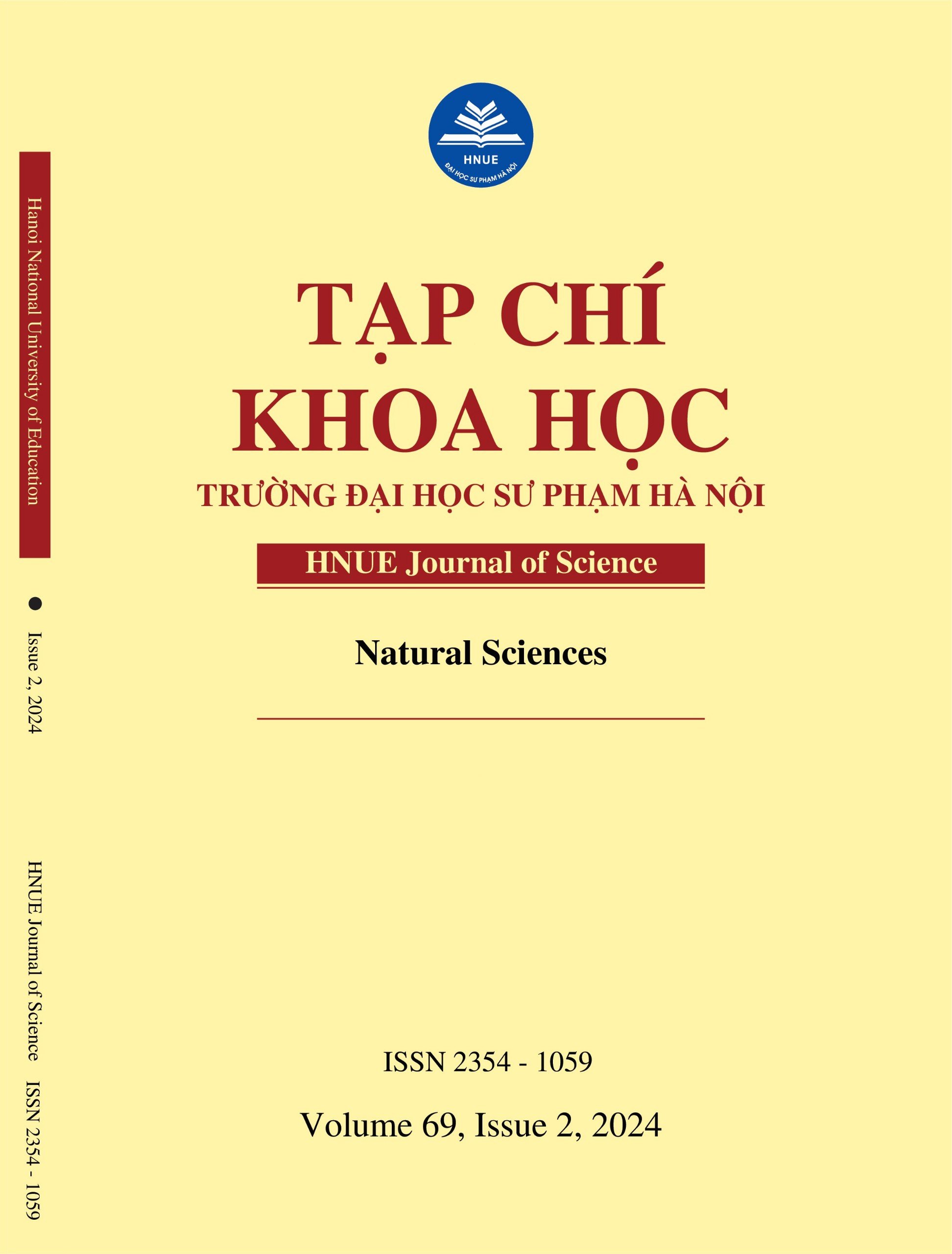STUDY ON THE CO\(_2\) ADSORPTION PROPERTIES OF ACTIVATED CARBON PRODUCED FROM CORN COB
DOI:
https://doi.org/10.18173/2354-1059.2024-0022Keywords:
adsorption, CO\(_2\), activated carbon, isotherm, isosteric heatAbstract
Activated carbon (AC) prepared from corn cobs was used as an adsorbent for CO2 capture under different temperatures. The characterization by Boehm titration and TGA showed that the total acidic groups of AC were significantly higher than the total basic groups, and the increasing activated temperature resulted in increases in the total basicity and decreases in the total acidity. The CO2 adsorption behavior of AC was predicted by four isotherm models. It was found that the suitable order was Sips > Tóth > Freudlich > Langmuir. The maximum monolayer coverage capacity and isosteric heat of adsorption were in the range of 6.28 - 10.92 mmol g-1 and 26.48 - 21.55 kJ mol-1, respectively. High specific surface area and high amount of carboxylic groups were found to be in favor of CO2 capture.
References
[1] Lee ZH, Sethupathi S, Lee KT, Bhatia S, Mohamed AR, (2013). An overview on global warming in Southeast Asia: CO2 emission status, efforts done, and barriers. Renewable and Sustainable Energy Reviews, 28, 71-81.
[2] International Council on Clean Transportation, EU CO2 emission standards for passenger cars and light-commercial vehicles, Retrieved 5 February 2014.
[3] Leung DYC, Caramanna G, Maroto-Valer MM, (2014). An overview of the current status of carbon dioxide capture and storage technologies. Renewable and Sustainable Energy Review, 39, 426-443.
[4] Mofarahi M, Gholipour F, (2014). Gas adsorption separation of CO2 /CH4 system using zeolite 5A. Microporous and Mesoporous Materials, 200, 1-10.
[5] Wickramaratne NP, Xu J, Wang M, Zhu L, Dai L, Jaroniec M, (2014). Nitrogen enriched porous carbon spheres: Attractive materials for supercapacitor electrodes and CO2 adsorption. Chemistry of Materials, 26(9), 2820-2828.
[6] Loganathan S, Tikmani M, Edubilli S, Mishra A, Ghoshal AK, (2014). CO2 adsorption kinetics on mesoporous silica under a wide range of pressure and temperature. Chemical Engineering Journal, 256, 1-8.
[7] Liu J, Thallapally PK, McGrail BP, Brown DR, Liu J, (2012). Progress in adsorption-based CO2 capture by metal-organic frameworks. Chemical Society Reviews. 41, 2308-2322.
[8] Pedroza MM, Machado PRS, Silva JGD, Arruda MG, Picanco AP, (2023). Production and application of activated carbon obtained from the thermochemical degradation of corn cob. Journal of Applied Research and Technology, 21, 952-964.
[9] Le VK, Dang VC, Luong TTT, (2016). Investigation of the Capacitive Properties of Activated Carbon Prepared from Corn Cob in Na2SO4 and K2SO4 Electrolytes. Canadian Chemical Transactions, 4(3) 302-315.
[10] N. Rambabu, R. Azargohar, A.K. Dalai, J. Adjaye, (2013). Evaluation and comparison of enrichment efficiency of physical/chemical activations and functionalized activated carbons derived from fluid petroleum coke for environmental applications. Fuel Process Technology, 106, 501-510.
[11] Figueiredo JL, Pereira MFR, Freitas MMA, Orfao JJM, (1999). Modification of the surface chemistry of activated carbon. Carbon, 37, 1379-1389.
[12] Petrovic B, Gorbounov M, Soltani SM, (2022), Impact of surface functional groups and their introduction methods on the mechanisms of CO2 adsorption on porous carbonaceous adsorbents. Carbon Capture Science and Technology, 3, article ID: 100045.
[13] Khosrowshahi MS, Abdol MA, Mashhadimoslem J, Khakpour E, Emrooz HBM, Sadeghzadeh S, Ghaemi A, (2022). The role of surface chemistry on CO2 adsorption in biomass-derived porous carbons by experimental results and molecular dynamics simulations. Science Reports, 12, Article ID: 8917.
[14] Siperstein FR, Avendano C, Ortiz JJ, Gil-Villegas A, (2021). Analytic expressions for the isosteric heat of adsorption from adsorption isotherm models and two-dimensional SAFT-VR equation of state. AIChE Journal, 67, article ID: e17186.
[15] Akpasi SO, Isa YM, (2022). Effect of operating variables on CO2 adsorption capacity of activated carbon, kaolinite, and activated carbon – kaolinite composite adsorbent. Water-Energy Nexus, 5, 21-28.
[16] Fatima SS, Borhan A, Ayoub M, Ghani NA, (2023). Modeling of CO2 adsorption on Surface-Functionalized Rubber-Seed Shell Activated Carbon: Isotherm and Kinetic Analysis. Processes, 11(10, article ID: 2833.
[17] Choma J, Stachurska K, Marsweuski, M, Jaroniec M, (2016). Equilibrium isotherms and isosteric heat for CO2 adsorption on nanoporous carbons from polymers. Adsorption, 22, 581-588.
[18] Ma X, Li Y, Cao M, Hu Changwen, (2014). A novel activating strategy to achieve highly porous carbon monoliths for CO2 capture. Journal of Materials Chemistry A, 2, 4819-4826.
[19] Simmons JM, Wu H, Zhou W, Yildrim T, (2011). Carbon capture in metal-organic frameworks – a comparative study. Energy and Environmental Science, 4, 2177-2185.







